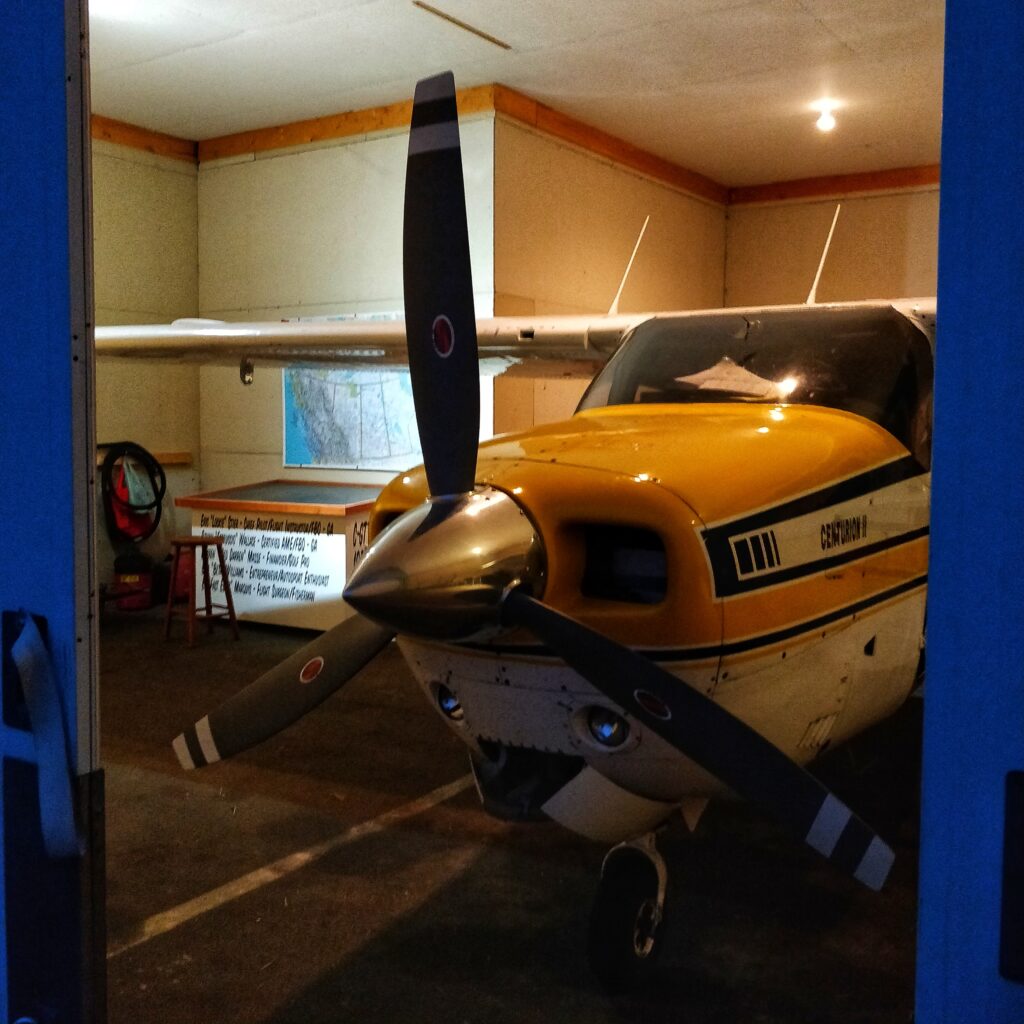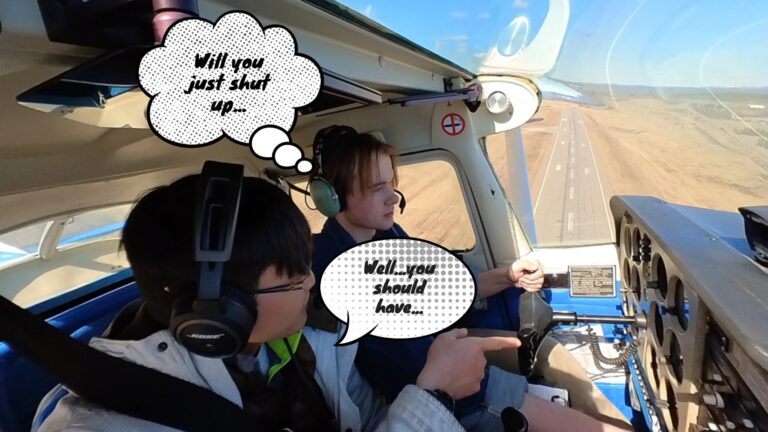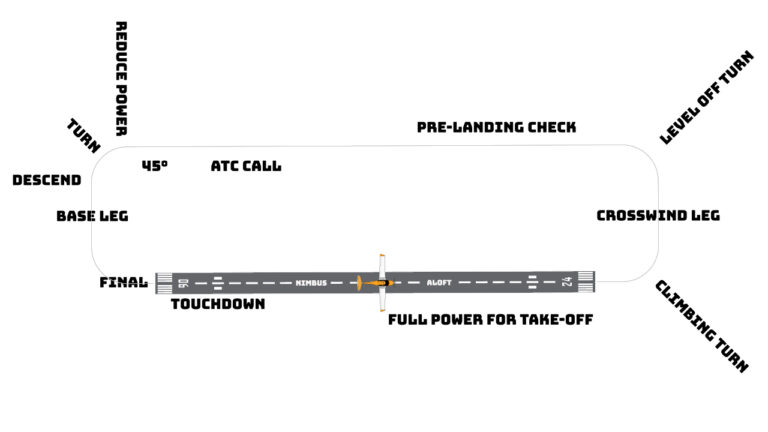
Fire Patrol? What is it?
Whenever we see wildfire or forest fire on the news, we see large airplanes dumping tons of fire retardant and smaller airplanes and helicopters bombing the fire with water. Little is known of a group of wildfire fire patrol airplanes patrolling the wilderness. Before I joined this company, I have never heard of fire patrol and they are usually the first line in controlling wildfire. In my case, we use small airplanes (Cessna 182/210) and fly into remote areas and mountain ranges to spot any new wildfires. If we see any ones, we report them to the BC Wildfire Services and they decide what to do with the fire. Either fight them or just leave them and let mother nature takes its course.
Wait…How Did The Fire Start In The First Place?
Allow me to share my limited knowledge on how fires start in the forest. Forest fire can be started by a number of ways. However, the majority of wildfires are caused by lightning. Whenever there is a thunderstorm there is a potential of forest fire. The worst type of thunderstorm is dry thunderstorm where there will be lightning and thunder, but no rain. This is the official website to check on current wildfire maps and activities in BC.
I Finally Got The Call But Not What I Expected
While studying some flight manuals for my company training, I got a call from my boss. I thought he wanted to schedule my training. It turns out someone from forestry couldn’t make the fire patrol flight and he asked me if I want to tag along for a fire patrol flight. I immediately said “yes”!
He gave me a set of instructions:
- Bring food and water
- Don’t drink much beforehand
- Wear proper clothing that could survive the night
I understood the first and third point. If the weather turns bad, we might have to land somewhere and survive the night. I later found out what the second point meant. Fire patrol take an average of 4-6 hours. There is no rest stop or toilet breaks. This worries me. I like to drink water and naturally visits the toilet every couple of hours. Other than sleep, I don’t think I have ever gone through 6 hours without going to the toilet at least once. I thoroughly dehydrate myself in preparation for the flight.
This could be an interesting flight. Sitting in an airplane for 6 hours with someone I just met which is also my boss.
Let’s Roll
Our goal was to cover a section of the rocky mountains and surrounding area near Prince George. The BC Wildfire Service gave us a predetermined route for this fire patrol. The route was based on known lightning strikes from the last thunderstorm. The best case scenario is to spot zero new wildfires. But I was hoping to see some wildfire and see how they are reported to the Wildfire Service.
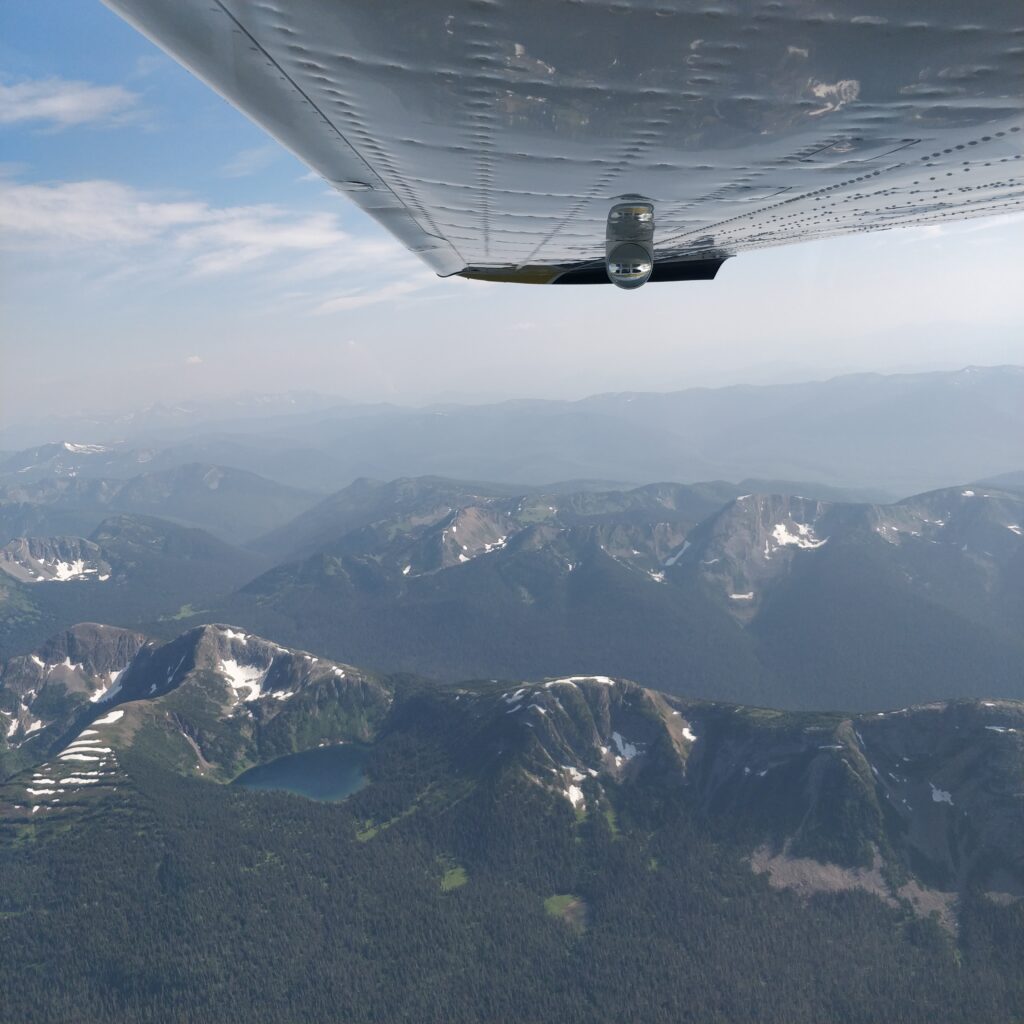
At the beginning everything seems fine. The weather was good. I have not done mountain flying before and the view out the window was simply stunning. My boss told me how to identify a fire. The first thing to look out for is smoke. However, it could be tricky at times looking from so high up. Low lying clouds, dust from near by roads and haze might trick us into believing that is a wildfire. It takes experience to identify smoke from a fire at first glance.
Wildfire Spotted! Analyze And Report
When we spotted a smoke from a distance, we obviously have to check it out. As we flew nearer, we confirmed it’s a new fire and my boss told me what to lookout for. The analysis starts from a distance away. As we got closer, we collected more and more data. Some of the questions we have to answer are: What is the wind direction and speed? Which direction is the fire burning? Is the fire on a slope or flat land? Are there any water body to use to fight the fire? What is the fuel source? How strong is the fire? And many more.
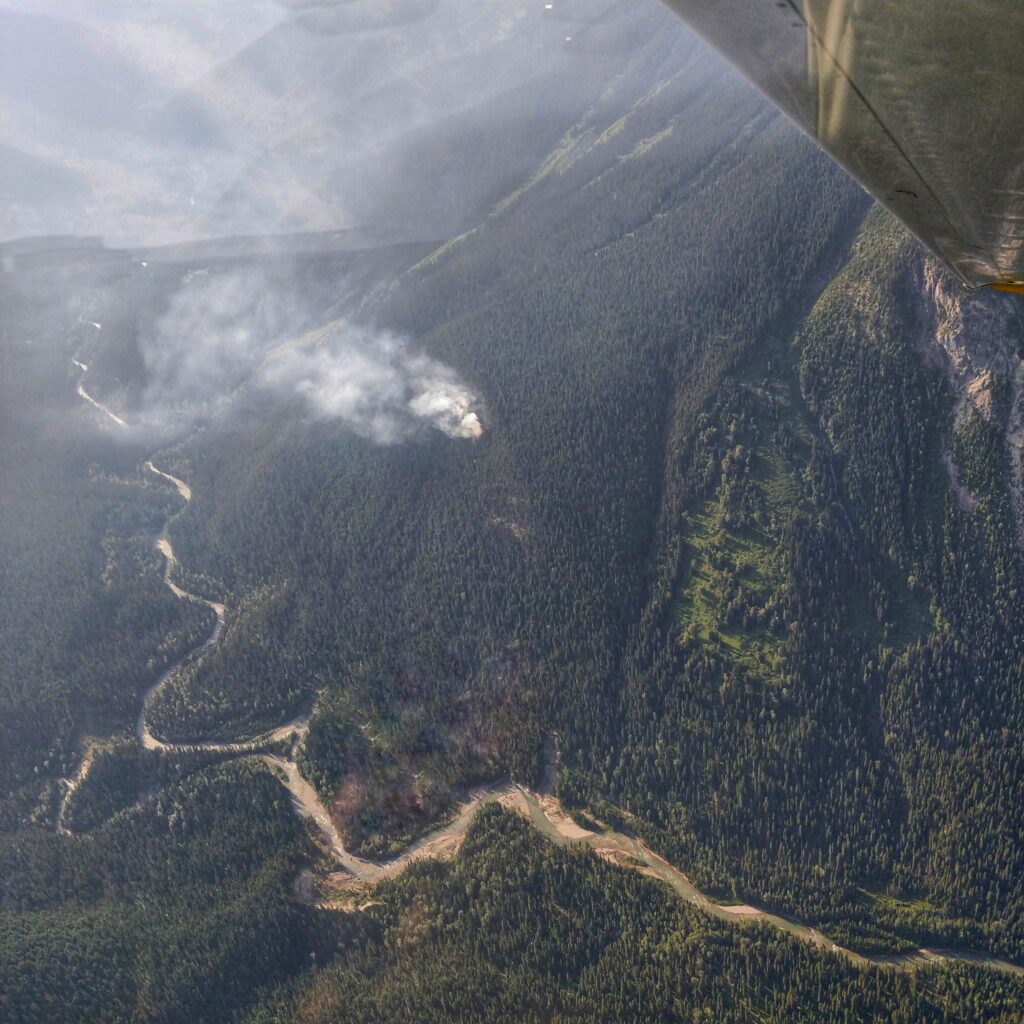
He position the airplane exactly where he wanted to have a better look at the fire. Maneuvering over the fire like an aerobatic pilot. Steep turns, wing overs, stall warning horn. He didn’t even warn me what he is going to do! Those G forces he pulled made me really uncomfortable. If I was new to flying, I probably won’t want to learn flying after this flight. We were just an hour into the 5 hours flight and I am already feeling sick!
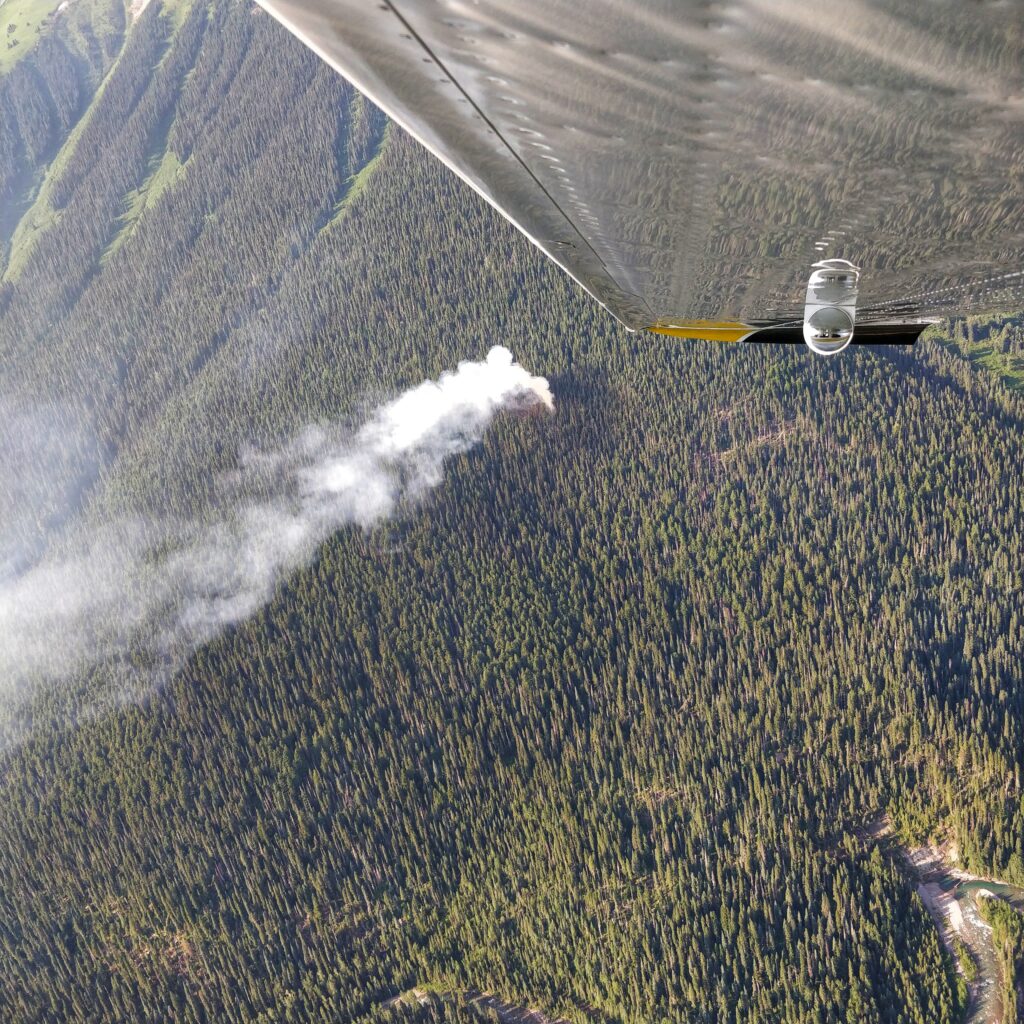
Basically, he flew low in a mountainous area, looking out the window at the fire and writing at the same time. Wow…

As he collected the data, he asked me to record the coordinates of the fire as we flew over it. Filled up the Initial Fire Report and reported the fire to the BC Wildfire Service over the radio as we were circling over the fire. It is now up to them to decide the fate of the fire.
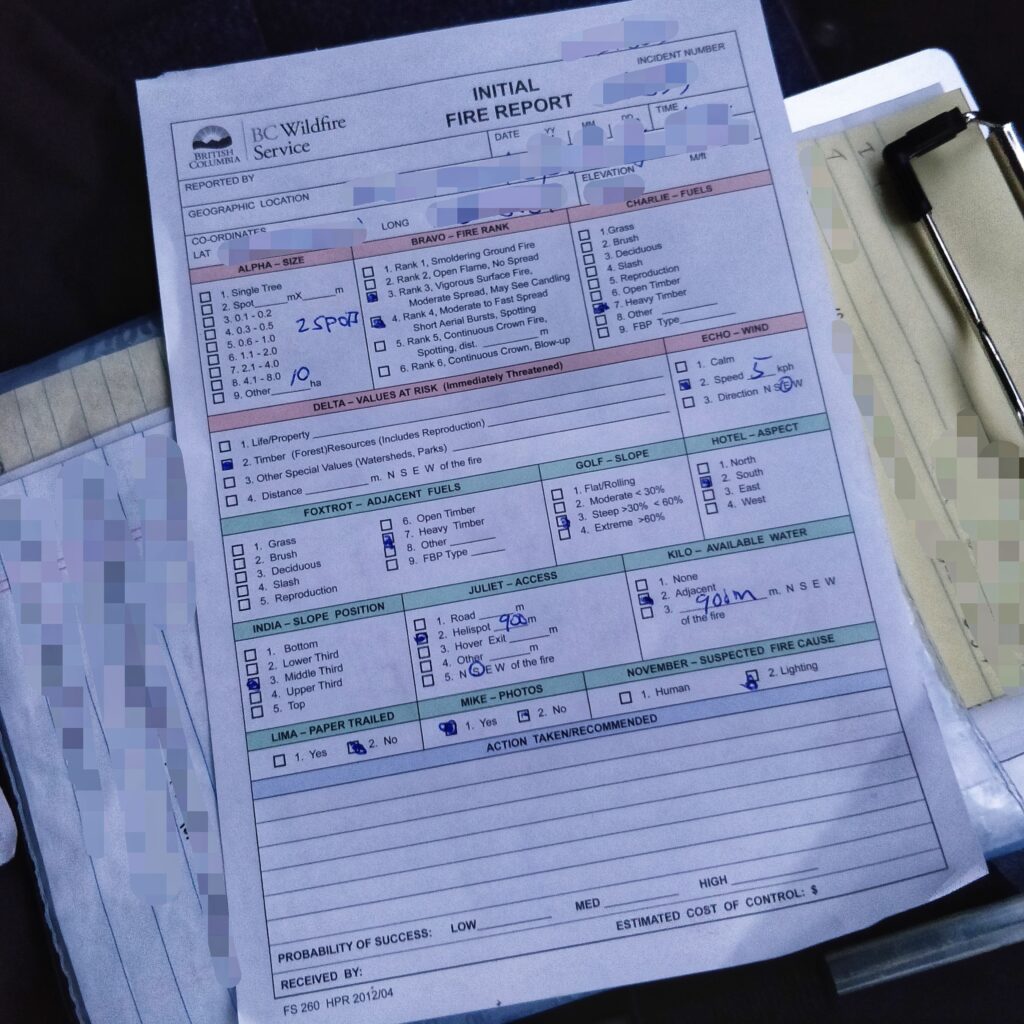
On To The Next Checkpoint
As we continued to our next checkpoints, the visibility got really bad. Smoke from other wildfires filled the skies. The glare from the setting sun makes things even worst. With those tall pointy rocks and low visibility, it’s a recipe for disaster. Luckily, the visibility starts to get better after awhile.
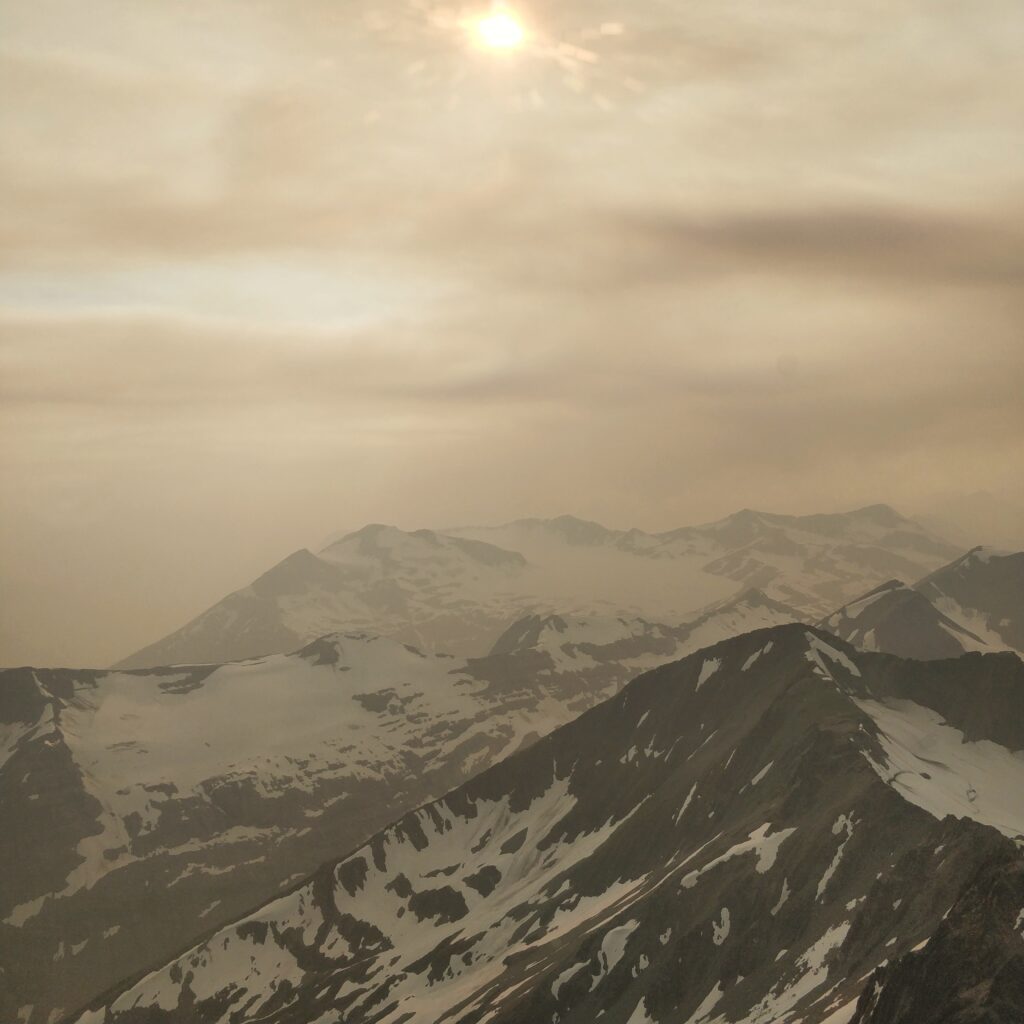
We didn’t complete our predetermined route. One of the rules in fire patrol is not to fly after sunset. We cover as much area as we could and head straight back to Prince George Airport before the sky goes completely dark.
It Was A Great Experience For Me
All in all, it was a good flight and a great experience for me. I got to experience what wildfire fire patrol is first hand, got lots of stunning pictures and had a chance to fly this awesome little airplane. I hope one day I would be able to lead a fire patrol.
